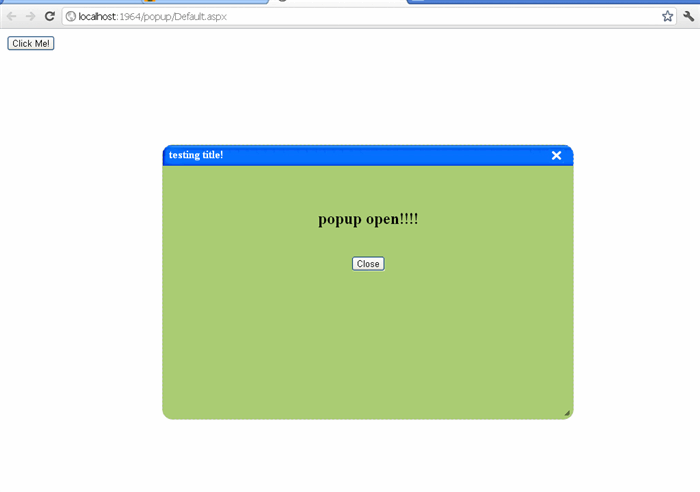

At last, we call the launch() method of the Application class with the command lines arguments. To show all the components we created, we create a Scene object and pass tilePane and the gaps between each grid.įinally, we set the scene object to the stage object and call the show() method of the stage class. Now we set the event handler as an action of the button and add the button to the tilePane layout object using tilePane.getChildren().add(). To hide the popup, we use the hide() function. In the anonymous class of EventHandler type, we call popup.isShowing() and check if the popup is visible on screen, and if it is not, then show it using the popup.show() method in which the stage object is passed as an argument. Now, we create an event handler’s anonymous class to open and close the popup when the button is clicked. Then, we set the size of label using setHeight() and setWidth() methods. To set the background of the Label we use the setStyle() method and pass in the style. We create a Popup object and add the Label object to it using () method. Next, we create an object of the Label component to show in the popup. To layout the components inside the popup, we use a layout component called TilePane that shows its children nodes as a grid. As the stage is the main window, we set its title using tTitle(), and to open the JavaFX popup, we create a Button component’s object. The start() method takes a single argument of the Stage type, automatically created by the JavaFX runtime. We then call the abstract method start() of the application class, which is essential because it is executed when the application is started. Now we come to the program in the below example, we create a class Main and extend the Application class of the JavaFX package. JavaFX Application Class: Used to launch the JavaFX application, and the class we use should extend the application class.Scene: A JavaFX scene is another class that renders the given components of the JavaFX toolkit.It is platform independent unlike AWT and has lightweight components. It is build on top of the AWT API and entirely written in java.

It is a part of the JFC ( Java Foundation Classes). Stage: The top-level class in JavaFX extends the window and creates a window where we can place a scene. Swing in Java is a lightweight GUI toolkit which has a wide variety of widgets for building optimized window based applications.Popup With a Text in Javaīefore proceeding to the actual program, we should check out the methods and classes with the JavaFX GUI kit. Following are two examples of using the popup component. As the name suggests, the popup component shows a simple popup when executed using the GUI features of JavaFX. In this article, we will see how we can use one of the components of the JavaFX toolkit called popup.


 0 kommentar(er)
0 kommentar(er)
